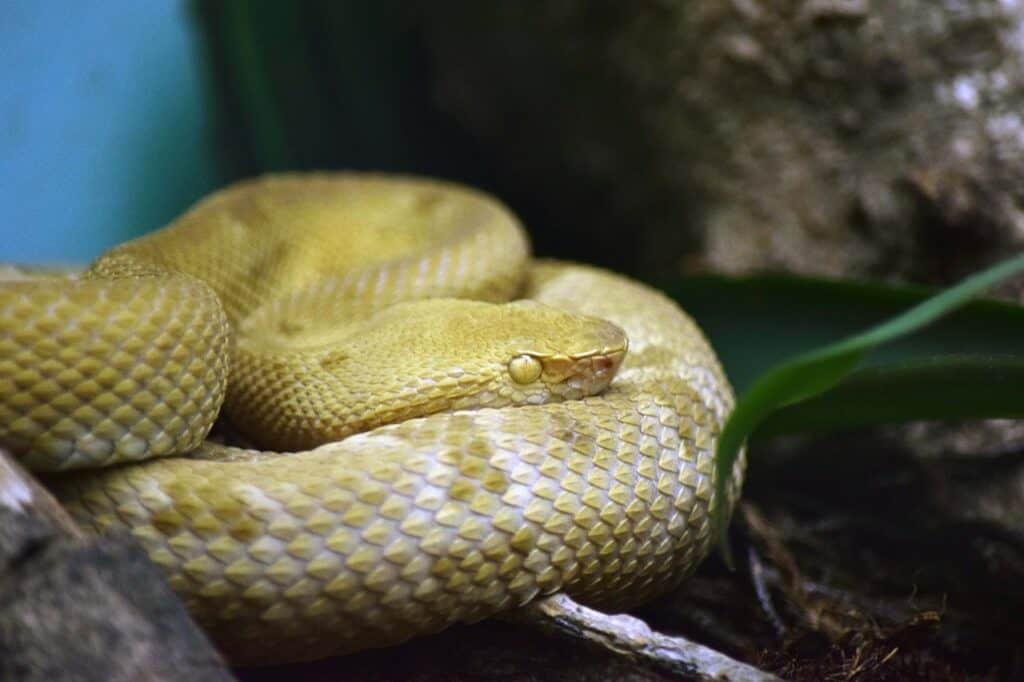Venomous bites from cone snails, scorpions, spiders, and snakes are responsible for injuries and deaths every year. Of course, some are more dangerous than others. The earliest research-driven medicine is captopril, cobra venom has been used in painkilling remedies for millennia.
Yet, modern science shows us that there is more to discover. Here are six life-saving medicines made from snake venom.
Captopril
Captopril was a game-changer. Originally released in the 1980s, captopril was the first ACE (angiotensin-converting enzyme) inhibiting medicine manufactured from snake venom. Because of the timing and its origin, cardio-vascular conference attendees in Sao Paulo, Brazil had a chance to see the deadly pit viper in person. It probably livened up what might otherwise have been a tedious, somewhat dry conference.
Enalapril
To combat some of captopril’s side effects, Merck replaced the thiol group present in captopril and made several other modifications, eventually coming up with enalapril. It was a safer option that gave rise to even more ACE-inhibiting medications.
Other captopril derivatives include lisinopril, ramipril, trandolapril, and moexipril.
Quinapril
Generally safer than captopril and enalipril, quinapril is one of the most commonly prescribed ACE inhibitors. It also helps lower blood pressure and reduce heart attack chances.
Lisinopril
This drug uses a synthetic peptide based on jararaca venom and captopril research. It’s one of several medications based on that species’ venom peptides and part of the ACE inhibitor group.
Eptifibatide
Developed from the pygmy rattlesnake’s (Sistrurus miliarius) venom, eptifibatide is an antiplatelet medication that prevents blood clots. It’s typically used when undergoing angioplasty and to prevent heart attacks in certain patients. Eptifibatide keeps the platelets from sticking together, ensuring that they slide past one another in the body.
Tirofiban
The saw-scaled viper (Echis carinatus) may have a nasty reputation for causing fatal bites, but this cranky snake’s venom is also the source of life-saving medication. Tirofiban also prevents blood clots and heart attacks by preventing the platelets from sticking together — sort of like lubricant for your blood cells.
Universal Antivenom
That’s right, a universal antivenom may be just on the horizon. It’s not there yet, but researchers identified proteins present in snake venoms across multiple types and species. According to the study, published in February 2024 in Science Translational Medicine, researchers identified an antibody that is effective against the most significant snake toxins — the three-finger toxins. Called three-finger toxins (3FTx) because their shape resembles three fingers, these proteins are present in many vipers and elapids and are responsible for most snakebite deaths. By developing an effective antidote to 3FTx, snakebite victims won’t need to know they were “bitten by a western diamondback, make sure you have CroFab on hand.” Treating venomous snakebites will become much easier and cost effective.
More Snake Venom May Yield Life-Saving Medications

Golden lanceheads are critically endangered because of over-collection and a small, isolated population.
©Miguelrangeljr / Creative Commons – License
Most of the Captopril research centered around the jararaca’s venom. But its close cousin and endangered island native, the golden lancehead, has even more powerful venom. The toxicity is five times that of the jararaca and researchers say its peptides might revolutionize what they already know about snake venom research and medicine.
The bushmaster, the longest pit viper in the world, is also the subject of research. Its venom isn’t as toxic as the jararaca or golden lancehead, but bushmasters can kill because of the large quantity of venom they produce.
Other researchers are focusing on various cobra species, including the spectacled cobra and the “not a true cobra, but still a cobra,” king cobra. The neurotoxic venom from these snakes shows promise as a powerful painkiller. Time will tell, but if the ancient uses for cobra venom are any indication, we’ll probably have some amazing discoveries over the next several years.
Medications from Other Animals’ Venom
Snakes aren’t the only place scientists search for medicines. Many venomous animals have the potential to save lives, including the Gila monster and cone snail.
A hormone in Gila monster venom created Exenatide, an injectable Type-2 diabetes drug that helps reduce the amount of insulin diabetics need. Another drug, also produced from a hormone in their venom, Semaglutide, is marketed as Wegovy, a weight-loss medication.
The research doesn’t end there, cone snail venom gave us Ziconotide, a pain killer.
The photo featured at the top of this post is © Mark_Kostich/Shutterstock.com
Discover the "Monster" Snake 5X Bigger than an Anaconda
Every day A-Z Animals sends out some of the most incredible facts in the world from our free newsletter. Want to discover the 10 most beautiful snakes in the world, a "snake island" where you're never more than 3 feet from danger, or a "monster" snake 5X larger than an anaconda? Then sign up right now and you'll start receiving our daily newsletter absolutely free.
Thank you for reading! Have some feedback for us? Contact the AZ Animals editorial team.






